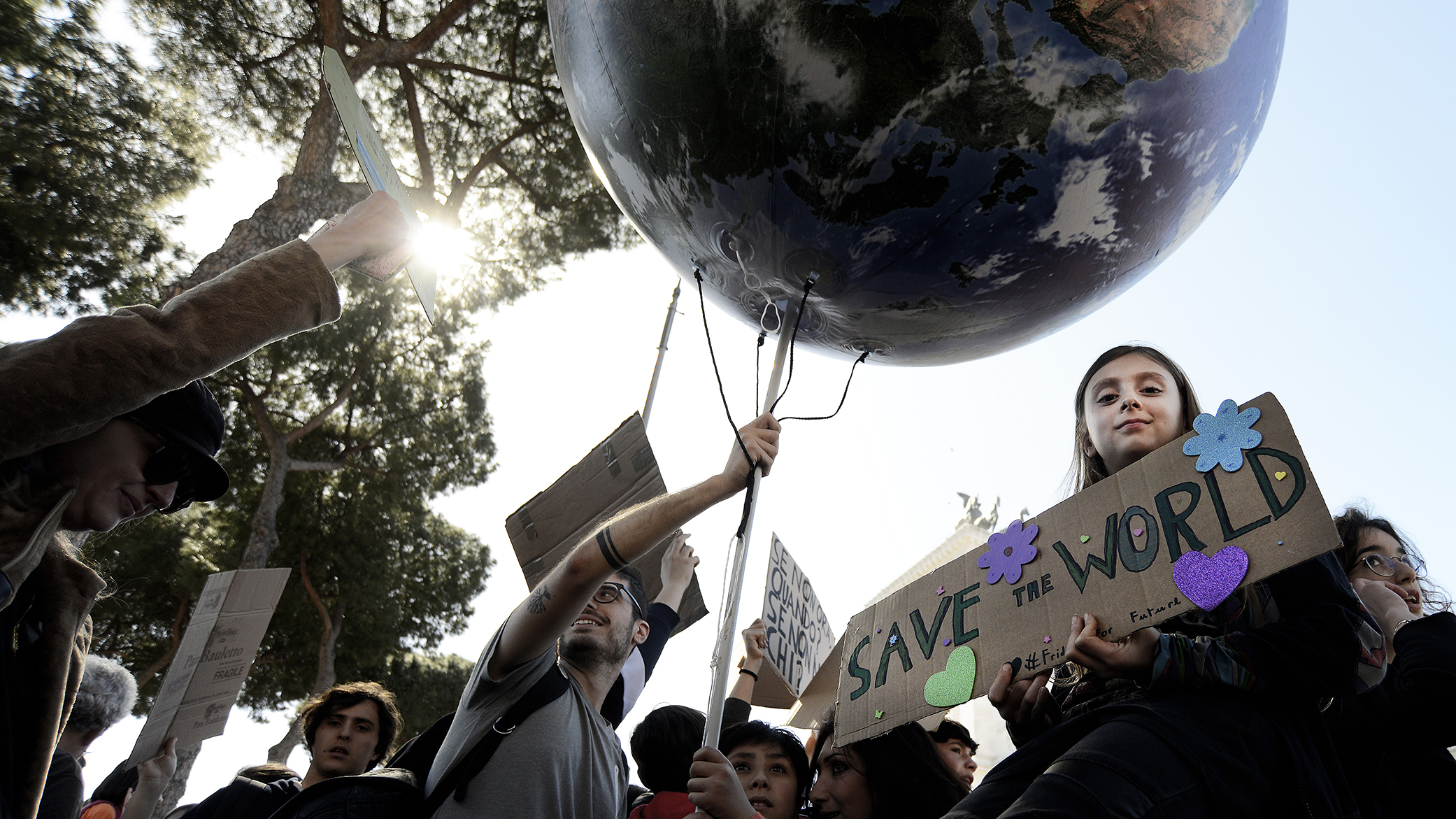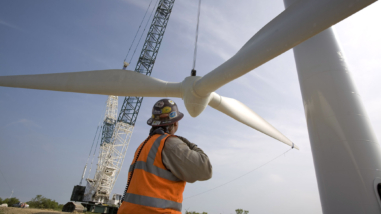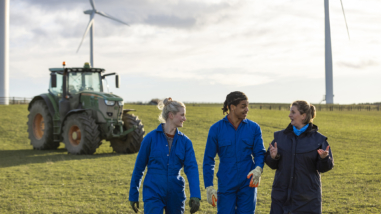Earth Day reflections: What we have to celebrate, and the substantial—but surmountable—challenges we still face

Earth Day provides a time to reflect both on past environmental successes and future challenges. We have many successes to celebrate, though unfortunately a great number of challenges still to overcome.
First, some of the good news:
- This past year has seen a record number of new zero-emission electricity generating facilities come on line, and a record number of older, carbon-intensive fossil fuel stations closed down. Globally, we are seeing a diversification and a decarbonization of our electric system, with the prospects for even more to come this year. This is driven by the economics: Renewable energy is now cheaper to install and run than any fossil fuel station built today.
- Virtually every car company in the world now offers one or more electric vehicles in its fleet, and more consumers are choosing them in place of gasoline cars. Diesel vehicles, in the wake of the VW scandals, are increasingly being phased out entirely. And a host of new technologies are coming on the market to electrify trucks and buses — while the rapid rise of electric scooters in cities around the world is changing the way we meet our urban commuting needs, complemented by dozens of cities seeking to declare themselves “internal combustion engine–free zones.” Manufacturers around the world are seeing this trend for what it is: the future of transportation. And every company is rushing to compete in this new market.
- We have seen an outpouring of new enthusiasm from the global youth community: teens, university students, and young adults around the world are turning out to march for a cleaner environment and to demand their leaders provide more than rhetoric to solve climate change, to eliminate inequity, and to build a sustainable future. They are not content to hear promises, but instead seek concrete action in the form of legislation, regulation, and financing. And history suggests that when the world’s youth turns out, everyone listens—so this is an extraordinary harbinger of change.
- In late 2018, the global climate community, meeting in Katowice, Poland, completed work on the Paris Accord “Rulebook” setting the stage for implementation of that agreement. Nations now know what they need to do, how to report out those actions, and under what systems they will be reviewed to assess their performance against their national climate targets. And with few exceptions, nations have kept their commitments to meet their Paris targets.
But the past year has not been one of unalloyed successes. Global greenhouse gas concentrations have risen by several parts per million in the atmosphere—a result of a further rise in global emissions, and temperatures continue to reach new record levels. The consequences of these climatic shifts have been reflected in a litany of global disaster: wildfires in California killed dozens, destroyed countless millions of dollars in personal property, and devastated large swathes of forest land and wild preserves. Flooding in the U.S. Midwest disrupted the livelihoods of farmers at the heart of the American food system. Inundations at an unprecedented scale raged through Africa as a result of Typhoon Idai. Record heat levels in much of the Middle East and a continued drought in Australia and South Africa threatened human and wildlife populations. And the sources of this carbon pollution are making other forms of toxic pollution increasingly intolerable in cities around the world—with lives lost and public health at risk as our burning of dirty fuels adds a deadly and toxic mix to our skies and waters.
Simultaneously, while some governments are living up to their commitments to sustainability, too many have slowed or even halted their efforts. The U.S. federal government not only continues to dismiss the urgency of climate change, but has been destroying our national heritage by removing protections from our national parks and wild lands in order to drill for more oil and gas—even though global energy markets are saturated, and we are developing lower costs alternatives through renewable energy. The new government of Brazil seems set to follow suit, and while it has decided not to withdraw from the Paris Accords (as the United States has announced its intent to do), it has nonetheless been allowing an increase in deforestation of the Amazon basin. Japan and Korea continue to promote the export of coal power into South East Asia at the expense of both greenhouse gas emissions and local air quality. Even China, which has been a poster child for its strong domestic commitment to renewable energy, plans exports of enormous numbers of coal-fired power plants through its Belt and Road Initiative.
Clearly, notwithstanding the successes we’ve seen this past year, these challenges are substantial. But they ARE surmountable, and the Hewlett Foundation is proud to be working with grantees around the world to address them.
- We know that to change markets, and move toward an appropriate accounting for global environmental damages, we need to price pollution. Resources for the Future has been working on better understanding the “social cost of carbon” and their results will enable policymakers to set the right levels for carbon prices as well as regulations. And we know that both climate change impacts and the climate policy that is emerging puts corporate assets at risk. We are working with partners such as Carbon Tracker, CERES, the Carbon Disclosure Project, and Bloomberg Philanthropies to promote the application of appropriate risk evaluation tools to incentivize a more appropriate allocation of investments—and discount those companies that are not preparing for a climate future.
- We know that next steps will need to be global in scope; no single country, no matter how large, can solve the problem alone. The European Climate Foundation along with the UN Foundation, the ClimateWorks Foundation and others, has been actively working to support continued progress under the UN Climate Change Convention. Looking forward, they are all involved in supporting the UN Secretary General’s Climate Change Summit, to be held in September 2019, that will continue to raise the bar on global climate ambition, as well as to support of the government of Chile, which will host the next Conference of the Parties to the UN Climate Convention and Paris Accords.
- We know that change will not only occur at the national or international level—but that cities and states, too, will be essential players. The Energy Foundation has been a core partner in helping U.S. states move forward toward a cleaner future, while the U.S. Climate Alliance has provided a platform for states that are setting aggressive new targets to work jointly to develop and share best practices. And with the support of these and other organizations, leading local governments have been taking the kind of steps that point the way for those to follow. Hawaii and New Mexico have announced their intent to be carbon free by mid-century. California continues to lead with its requirements on renewable energy and transportation, while cities such as Copenhagen, Paris, New York, Los Angeles, and others are setting new standards for buildings, cars, and even the mundane but essential emissions stemming from waste management.
- We know that we will need to mobilize trillions of dollars to invest in more renewable energy, infrastructure for our electrified transport systems, and an agricultural sector that absorbs rather than emits greenhouse gases. We are working with groups as diverse as the Platform for Carbon Accounting Financials (PCAF), the Clean Energy Credit Union, Climate Action 100+, We Mean Business, and BlackRock as well as the World Bank, and the governments of France, Germany, and Canada to find new ways to mobilize capital at scale. And the billions of dollars our partners have already helped set in motion suggest we have at least some of the right tools to further scale up and meet our goals.
- We know that even our most aggressive efforts to reduce emissions will leave us short of our global temperature goals unless we can develop and see the deep penetration of technologies to take emissions out of the atmosphere. Partners such as the ClimateWorks Foundation, the Packard Foundation, Linden Trust, ClearPath, Columbia University, the Great Plains Institute, and others have been helping promote the development and application of these needed technologies, including natural solutions for soil and forest management, as well as technological solutions that capture emissions directly from the air.
- And we know that unless our global citizenry understand and value our environment, we cannot prevail. Governments, after all, tend to follow public opinion as much as they lead. We are fortunate to have partners as diverse as the Sunrise Movement, the Climate March, CHISPA, the Natural Resources Defense Council, The Nature Conservancy, The Sierra Club, and countless others working to educate people of all walks and in all corners of the world about the dangers we face with unrestrained development along our current trajectory. Fortunately, those same partners are also actively looking at solutions that benefit the many: new jobs and training to meet the demands of those new occupations; new investment and the building of communities that can result from the careful use of those resources; new technologies and the improved equity that can result from their development and application; and new and stronger voices engaging in local, national, and international decisionmaking, in both government and in the private sector.
Earth Day, at least in the Northern Hemisphere, comes at the start of spring. It is perhaps fitting that it does; the environment we live in is newly alive with flowers blooming, leaves unfolding, and snowmelt in the mountains leading to renewed vigor in streams and rivers. On this Earth Day, we should be pleased about what we have done. We should be mindful of the challenges we still face. But we should also know that we can achieve our goals, that the changes we know we need to make are well within our grasp. In reality, we have no choice; to stand still is to face certain destruction. But to move forward with the spring is to open new opportunities for better lives for us all.



